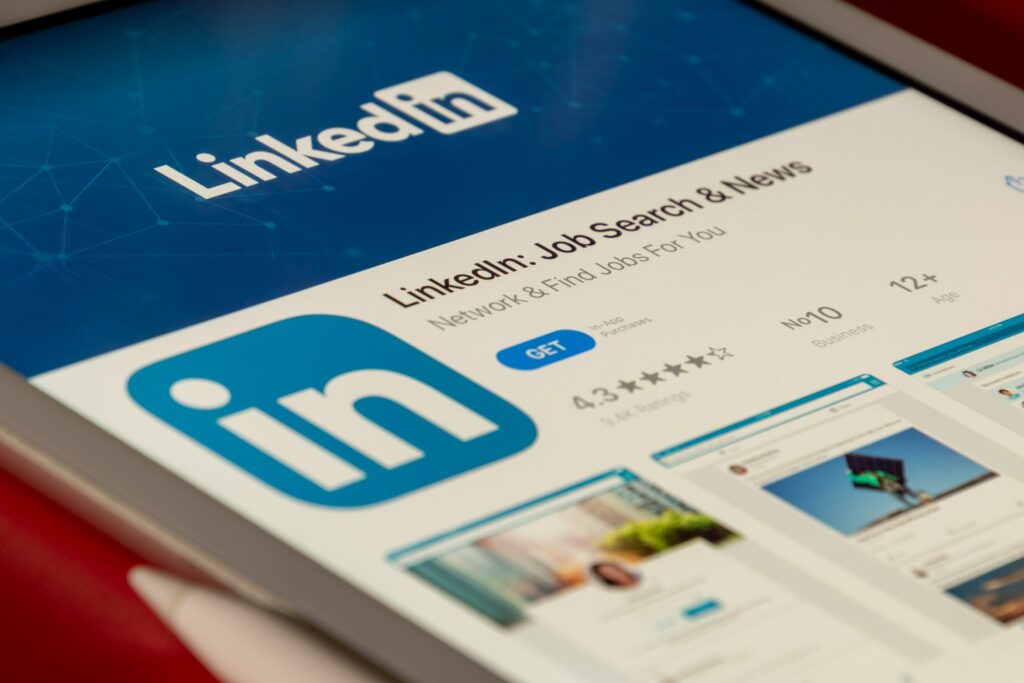This past year has been dominated by discussions on Generative Engine Optimization (GEO). However, even if GEO is reshaping the digital marketing landscape, marketers shouldn’t overlook the growing power of the LinkedIn algorithm. On July 30, 2025, LinkedIn boasted 1.2 billion members. This came with a 30% increase in comments, 20% in video uploads and a 9% revenue increase year-to-year1. These are useful signals for brands considering where to invest their digital marketing efforts. For LinkedIn marketing, these trends matter.
Why LinkedIn grows with GEO
AI is changing how people find new content. In Google AI mode, for example, it will still return a ranking of their best websites. Therefore, this shifts the way that brands optimize their website. They are not just for clicks (SEO strategy) but also now for context (GEO strategy).
So where does LinkedIn fit into this? The platform, built for professionals, contains multiple posts about different professional news-related topics. In addition, those posts are made by experts in that field. This helps generative engines cite those posts when returning an answer to a user, as the context of the post is helpful to its feedback. That is the core of generative engine optimization (GEO). Brands that use that to their advantage can make a data-rich post on LinkedIn and then have an expanded version of it on their website. That would help the brand win discovery and also credibility in a generative engine ranking. According to a recent article by the Search Engine Journal, if you have your brand has a featured snippet on Google search, 60% of the time it will also be found in Google “AI overview”2.
What the LinkedIn algorithm rewards

In 2025, the LinkedIn algorithm had some changes. Clickbait posts are now almost worthless; instead, real conversations are rewarded. For the post to be recommended higher than only first or second degree connections, it needs3 4
- Expertise instead of entertainment: posting in a clear niche and teaching something that will be specific and original. LinkedIn prefers to elevate the rankings of posts that are subject matter and that share knowledge, frameworks or even data. This is strong for LinkedIn marketing.
- Early engagement during the “golden hour”: When you publish your post, the first hour acts like a quality test where the more comments and interactions you get, the more it will be shown to second and third-degree connections.
- Native format: LinkedIn favours native videos, text and document carousels. It also downranks posts with lots of outside links in the post. If links are needed, you can have them in a comment under the post. Also, having a mobile-friendly format is better than none. Those are some good practices for any B2B social media platforms and digital marketing as a whole.
- Less is more: Only have 3-5 hashtags, as too many will penalize your post. Too many, and the post looks like a “spam” post to the LinkedIn algorithm.
- Quality over frequency: Favouring a well-written, engaging post instead of having multiple posts posted in 24 hours will increase the reach of the post as the algorithm is expertise and value driven.
- Dwell time: Posts that keeps the readers engaged with its content by reading, swipping or watching earns more reach to the post as time spent is a signal used in the algorithm.
LinkedIn vs GEO: How to pair them
Generative engines change where everyday consumers discover answers, whereas LinkedIn changes who they trust. Having a LinkedIn post from an expert cited in an answer from a generative engine will be more valuable than a random, unknown web page. While there isn’t any statistic on how likely a LinkedIn post is to be cited in a generative engine, it usually cites well-ranked and authoritative sources. That is why LinkedIn marketing works well with GEO’s. In conclusion, this means that a digital marketer can use a LinkedIn marketing strategy to spark meaningful comments and use their site to capture the citation.
read more: 4 Ways Generative AI is disrupting Search
Reference
- LinkedIn Corporate Communications. (2025, July 30). LinkedIn business highlights from Microsoft’s Q4 FY25 earnings. LinkedIn Pressroom. https://news.linkedin.com/2025/Q4FY25_Earnings_Highlights ↩︎
- Southern, M. G. (2025, January 28). Google AI overviews found in 74% of problem-solving queries. Search Engine Journal. https://www.searchenginejournal.com/google-ai-overviews-found-in-74-of-problem-solving-queries/538504 ↩︎
- Newberry, C., & Christison, C. (2025, July 16). How the LinkedIn algorithm works in 2025. Hootsuite Blog. https://blog.hootsuite.com/linkedin-algorithm/ ↩︎
- Wilson, A. (2025, August 6). How to capitalize on LinkedIn’s 2025 algorithm changes. LinkedIn Pulse. https://www.linkedin.com/pulse/how-capitalise-linkedins-2025-algorithm-changes-anne-wilson-sfhea-eombe/ ↩︎
